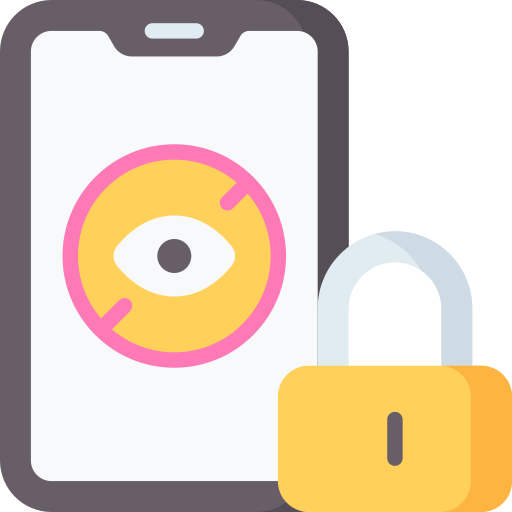Recognizing the Risks and Threats They May Encounter
Children today face a myriad of risks and threats when navigating the online world. One of the most prevalent dangers is encountering inappropriate content. With just a few clicks, children can stumble upon explicit images or violent videos that are not suitable for their age group. It is crucial for parents to educate their children about the importance of avoiding such content and teach them how to recognize warning signs.
Another risk that children may encounter online is interacting with strangers who have malicious intentions. Online predators often disguise themselves as friendly individuals in order to gain the trust of unsuspecting children. Parents must emphasize the importance of never sharing personal information, such as their full name, address, or school details, with anyone they meet online. Teaching kids to be cautious and skeptical when engaging with strangers on the internet can help protect them from potential harm.
Additionally, cyberbullying has become an alarming issue in recent years. Children may experience harassment or bullying through social media platforms or messaging apps. It is vital for parents to discuss this topic openly with their children and encourage them to report any instances of cyberbullying immediately. By fostering open communication and providing emotional support, parents can empower their kids to stand up against online harassment while also teaching them empathy towards others.
By understanding these risks and threats that exist in cyberspace, parents can take proactive steps towards safeguarding their children’s well-being online. Through education and open dialogue about responsible internet usage, recognizing suspicious links/downloads, protecting personal information from phishing attempts or malware attacks; building healthy habits around technology use; navigating social media safely; addressing cyberbullying issues – we equip our kids with critical thinking skills necessary for safe digital navigation while creating a supportive environment where they feel comfortable sharing their experiences without fear of judgment or punishment.
Educating Children about Online Privacy: Teaching Them to Safeguard Their Personal Information
With the increasing prevalence of online platforms and digital communication, it is crucial to educate children about safeguarding their personal information. Children often unknowingly share sensitive details online, making them vulnerable to privacy breaches and identity theft. Parents and educators must impart knowledge on the importance of privacy protection and teach kids how to navigate the digital landscape safely.
One effective approach is teaching children about the concept of personally identifiable information (PII) and what types of data fall under this category. PII includes details such as full name, address, phone number, birthdate, school name, or any other information that can be used to identify an individual. By explaining why it’s essential not to disclose such information publicly or with strangers online, children can better understand the potential risks associated with sharing personal data.
Additionally, parents should emphasize the significance of strong passwords when creating accounts on various websites or social media platforms. Encouraging kids to use unique combinations of letters, numbers, and symbols for their passwords helps protect their accounts from being hacked. It is also important for them not to reuse passwords across different platforms since a single breach could compromise multiple accounts simultaneously.
By instilling these practices early on in a child’s digital journey through open discussions and age-appropriate resources like books or videos, parents can empower their children with knowledge about protecting their personal information online. Ultimately, educating children about online privacy ensures they are equipped with critical skills needed to navigate the internet safely throughout their lives without compromising their security or becoming victims of cybercrime.
Exploring the Dangers of Online Predators: How to Teach Kids to Recognize and Avoid Them
Online predators pose a significant threat to children’s safety in the digital age. It is crucial for parents and educators to teach kids how to recognize and avoid these dangers. One effective approach is to educate them about the tactics that online predators commonly use, such as grooming and manipulation.
Parents should encourage open communication with their children regarding their online activities. By fostering a trusting relationship, kids are more likely to share any concerning interactions they may have had online. It is important for parents not to react negatively or blame their child if they do disclose such experiences, as this could discourage further communication.
Teaching children about setting boundaries and practicing safe online behavior is also essential. Kids should understand the importance of never sharing personal information, including full names, addresses, phone numbers, or school details with strangers on the internet. Additionally, they should be encouraged to only interact with individuals they know in real life and avoid engaging in private conversations or meeting up with people they have only met online.
By empowering children with knowledge about the risks associated with online predators and providing them with practical strategies for recognizing and avoiding dangerous situations, we can help ensure their safety in the digital world. Through ongoing education and open dialogue between parents, educators, and kids themselves, we can create a safer environment where our children can thrive while using technology responsibly.
The Role of Parental Controls: Implementing Tools to Protect Children from Inappropriate Content
Parental controls play a crucial role in safeguarding children from exposure to inappropriate content online. By implementing these tools, parents can have greater control over what their kids can access and view on the internet. With parental controls in place, parents can set restrictions on websites, block certain types of content, and even monitor their child’s online activities.
One important feature of parental controls is the ability to filter out explicit or adult-oriented material. Parents can customize settings to block specific websites or categories that they deem inappropriate for their children. This ensures that kids are not accidentally exposed to explicit content while browsing the internet.
Additionally, parental controls allow parents to set time limits for internet usage. This helps prevent excessive screen time and encourages a healthy balance between online activities and other aspects of life such as schoolwork, physical exercise, and social interactions. By setting reasonable time restrictions, parents can ensure that their children are engaging in a well-rounded lifestyle rather than becoming overly dependent on digital devices.
In conclusion,
parental controls provide an effective means of protecting children from accessing inappropriate content online.
By utilizing these tools,
parents can create a safer digital environment for their kids
and instill responsible internet habits early on.
With proper implementation,
parents can help shield their children from potentially harmful material
while also teaching them about responsible technology use
Building Healthy Online Habits: Teaching Kids about Responsible Internet Usage
With the increasing prevalence of technology in our lives, it has become crucial to teach children about responsible internet usage. Building healthy online habits is essential for their safety and well-being. One important aspect of this is teaching kids about the importance of privacy settings on social media platforms and other websites they use. By understanding how to adjust these settings, children can control who has access to their personal information and ensure that only trusted individuals can view their profiles or posts.
Another key aspect of responsible internet usage is teaching kids about the potential dangers of sharing too much personal information online. Children need to understand that once something is posted on the internet, it can be difficult or impossible to remove completely. Encouraging them not to share sensitive information such as full names, addresses, phone numbers, or school details helps protect them from potential harm.
Additionally, it is essential to educate children about cyberbullying and how they should respond if they encounter it. They need to know that online harassment is never acceptable and should be reported immediately. Teaching them strategies such as blocking or unfollowing individuals who engage in bullying behavior empowers them to take control over their own digital experiences.
By instilling these principles early on and regularly reinforcing them through open communication with your child regarding their online activities, you are equipping them with valuable skills for navigating the digital world safely and responsibly without compromising their privacy or security
Recognizing and Avoiding Online Scams: Equipping Kids with Critical Thinking Skills
Online scams are becoming increasingly prevalent, making it crucial to equip children with critical thinking skills to recognize and avoid them. One important aspect of this is teaching kids to question the legitimacy of online offers that seem too good to be true. Encourage them to think critically about why someone would offer a valuable item or service for free or at an unusually low price. By fostering skepticism, children can develop the necessary mindset to protect themselves from falling victim to these scams.
Another essential skill in recognizing online scams is teaching kids how to identify phishing attempts. Explain the concept of phishing and show examples of suspicious emails or messages that ask for personal information such as passwords or credit card details. Teach them never to click on links in unsolicited emails and emphasize the importance of verifying the source before sharing any sensitive information online.
Additionally, it’s crucial for children to understand that reputable organizations will not request personal information through email or instant messaging platforms. Educate them about common tactics scammers use, such as creating fake websites that look identical to legitimate ones. Encourage kids always to double-check website URLs and ensure they are visiting secure sites by looking for “https://” at the beginning of web addresses.
By equipping children with critical thinking skills, we empower them with tools necessary for navigating the digital world safely. Teaching them about questioning offers that seem too good, identifying phishing attempts, and verifying sources can go a long way in protecting their personal information from online scammers seeking vulnerable targets.
Navigating Social Media Safely: Teaching Children to Protect Their Digital Footprint
Social media has become an integral part of our daily lives, and it is crucial to teach children how to navigate these platforms safely. One important aspect of this is teaching them about protecting their digital footprint. Children need to understand that whatever they post online can have long-lasting consequences, both personally and professionally.
Parents should educate their children about the importance of privacy settings on social media platforms. By adjusting these settings, children can control who can see their posts and personal information. It’s essential for kids to be aware that sharing too much personal information publicly can make them vulnerable to identity theft or cyberbullying.
Another vital lesson in navigating social media safely is teaching children about the permanence of what they share online. Kids need to understand that once something is posted, it may never truly disappear from the internet. Encouraging them to think twice before posting anything controversial or potentially damaging will help protect their digital footprint in the long run.
By instilling a sense of responsibility and caution when using social media, parents can empower their children with the knowledge needed to protect themselves online. Teaching kids about privacy settings and reminding them that what they post stays forever are key steps in ensuring a positive digital presence for years to come.
Addressing the Issue of Cyberbullying: Empowering Kids to Stand Up Against Online Harassment
Cyberbullying has become a prevalent issue in today’s digital age, with many children experiencing harassment and abuse online. It is crucial for parents and educators to empower kids to stand up against cyberbullying and create a safe online environment. One effective way to address this issue is by teaching children about the importance of reporting incidents of cyberbullying.
Encouraging open communication between children and trusted adults can help identify instances of cyberbullying early on. By creating a safe space where kids feel comfortable sharing their experiences, they are more likely to seek support when faced with online harassment. Parents should emphasize the importance of reporting any form of bullying or inappropriate behavior encountered online, whether it be through social media platforms or messaging apps.
Additionally, educating children about the potential consequences that cyberbullies may face can empower them to take action against such behavior. Kids need to understand that engaging in cyberbullying can have serious legal repercussions and negative impacts on both the victim and themselves. By highlighting these consequences, we can foster empathy among young individuals while discouraging participation in harmful online activities.
Teaching Kids about Phishing and Malware: Recognizing and Avoiding Suspicious Links and Downloads
Phishing and malware are two common online threats that children need to be aware of in order to protect themselves while browsing the internet. Phishing refers to the act of tricking individuals into revealing their personal information, such as passwords or credit card details, by pretending to be a trustworthy source. On the other hand, malware refers to malicious software that can harm devices or steal sensitive information without the user’s knowledge.
To teach kids about phishing and malware, it is important to emphasize the importance of being cautious when clicking on links or downloading files from unfamiliar sources. Encourage them to only click on links that they trust and verify the authenticity of any requests for personal information before providing it. Remind them that reputable organizations will never ask for sensitive data through email or other online platforms.
Additionally, teaching children about safe browsing habits can help prevent encounters with phishing scams and malware attacks. Teach them not to download files from unknown websites or open attachments from suspicious emails. It is also crucial for kids to understand the importance of keeping their devices up-to-date with security patches and antivirus software installed.
By educating children about phishing and malware risks early on, parents can empower them with critical thinking skills necessary for recognizing and avoiding suspicious links and downloads. It is essential for parents/guardians/caregivers/educators/etc.,to engage in ongoing conversations with children about these potential dangers so they feel comfortable asking questions or seeking guidance whenever they come across something suspicious online
Encouraging Open Communication: Creating a Safe Space for Kids to Share Their Online Experiences
One of the most important aspects of creating a safe space for kids to share their online experiences is fostering open communication. Parents should strive to establish an environment where children feel comfortable discussing their online activities, concerns, and any issues they may encounter. By encouraging regular conversations about the internet and digital interactions, parents can gain valuable insight into their child’s online world and provide guidance when needed.
To promote open communication, it is crucial for parents to adopt a non-judgmental approach. Children need to know that they can freely express themselves without fear of punishment or criticism. Instead of reacting with anger or blame when a child shares something concerning, parents should remain calm and empathetic. This will help build trust and encourage children to be more forthcoming about their experiences online.
Furthermore, active listening plays a vital role in creating an open dialogue between parents and children regarding their online experiences. When engaging in discussions about the internet, parents should give undivided attention to their child’s thoughts and feelings. This means putting away distractions such as smartphones or laptops during these conversations. By truly listening to what children have to say without interrupting or dismissing their concerns, parents can convey that they value their opinions and are genuinely interested in understanding their perspective.
By implementing these strategies for encouraging open communication within the family dynamic, parents can create a safe space where children feel supported in sharing both positive experiences as well as any potential challenges they face while navigating the digital world
What are some risks and threats that kids may encounter online?
Some risks and threats that kids may encounter online include cyberbullying, online predators, exposure to inappropriate content, phishing scams, and the potential for their personal information to be compromised.
How can we educate children about online privacy and teach them to safeguard their personal information?
It is important to teach children to never share personal information online, such as their full name, address, phone number, or school. Additionally, parents can help children understand the importance of using strong, unique passwords and regularly updating them.
What are online predators and how can we teach kids to recognize and avoid them?
Online predators are individuals who use the internet to exploit and harm children. Parents should educate their children about the warning signs of online predators, such as requests for personal information, attempts to meet in person, or grooming behaviors. Teaching kids to never engage in private conversations or share personal information with strangers online is crucial for their safety.
What role do parental controls play in protecting children from inappropriate content?
Parental controls are tools that allow parents to monitor and restrict their child’s online activities. By implementing parental controls, parents can block or filter inappropriate content, set time limits for internet usage, and monitor their child’s online interactions.
How can we teach kids about responsible internet usage and encourage healthy online habits?
Parents can teach kids about responsible internet usage by setting clear rules and boundaries, discussing the importance of treating others with respect online, and promoting a healthy balance between online and offline activities. It is also crucial to lead by example and show children how to use technology responsibly.
How can we equip kids with critical thinking skills to recognize and avoid online scams?
Teaching kids about online scams involves educating them about the common warning signs, such as unsolicited requests for personal information or money, promises of unrealistic rewards, and suspicious or unfamiliar websites. Encouraging critical thinking skills will help children evaluate the legitimacy of online offers and protect themselves from scams.
How can we teach children to protect their digital footprint and navigate social media safely?
Parents can teach children to protect their digital footprint by encouraging them to think before posting or sharing anything online. Discussing the importance of privacy settings, not accepting friend requests from strangers, and being cautious about what they share online will help children navigate social media safely.
How can we empower kids to stand up against cyberbullying and address the issue?
It is essential to create an open communication environment where children feel comfortable reporting instances of cyberbullying. Parents should teach kids to save evidence, block and report the bullies, and seek help from a trusted adult or authority figure. Additionally, promoting empathy and teaching kids to be kind and respectful online can help prevent cyberbullying.
How can we teach kids to recognize and avoid suspicious links and downloads to protect against phishing and malware?
Parents should educate children about the risks of clicking on unfamiliar links or downloading files from untrusted sources. Teaching them to always verify the source, look for signs of suspicious behavior, and to avoid sharing personal information through links or downloads will help protect against phishing and malware.
How can we create a safe space for kids to share their online experiences?
Creating a safe space for kids to share their online experiences starts with open communication and trust. Parents should encourage their children to talk about their online activities, ask questions, and seek help when needed. It is important to listen without judgment, offer guidance and support, and work together to address any concerns or issues that may arise.




